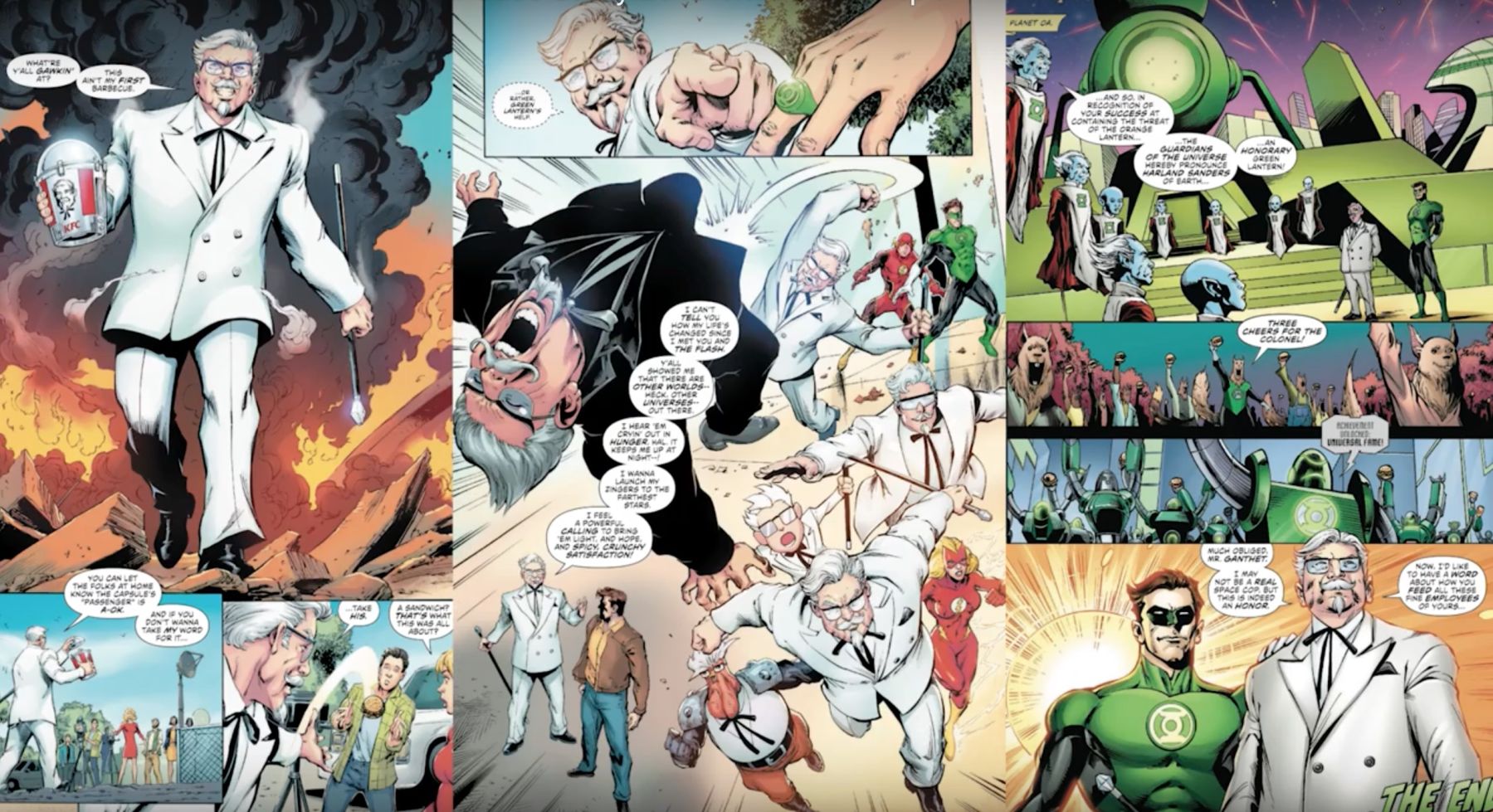In April, KFC founder Colonel Sanders (looking and sounding a lot like Rob Lowe) appeared on TV and announced plans to send the chain’s new Zinger sandwich to space, evoking a famous presidential rallying cry about doing things “not because they are easy, but because they are hard.”
And, on June 29, the Zinger ascended to the stratosphere in a specially designed bucket-craft borne by a Stratollite balloon from World View. It was the literal zenith of a campaign, and brand reinvention, based on doing things the hard way. That is, by making things designed to earn attention, and even affection, from real people.
The campaign, which reintroduced KFC’s brand icon and his no-shortcuts philosophy, launched in May 2015 when Colonel Harland Sanders reappeared in culture, portrayed first by Darrell Hammond, and then, in subsequent ads, by actors including Norm Macdonald, George Hamilton, Billy Zane, Vincent Kartheiser, and Lowe. The Colonel, and his spirit, were also brought to life via an array of unexpected experiences and products. These included: a series of well-reviewed comics made in conjunction with DC, an Instagram football game, Extra Crispy sunscreen, and, almost unbelievably, a real romance novel, its pages filled with real, uh, romance. The brand continues to explore uncharted territory, marking National Fried Chicken Day with the launch of H.A.R.L.A.N.D., which used AI and speech recognition technology to allow drive-through customers to order from a robot Colonel. Recently, KFC opened an online merch store which earned high praise even from style outlets like Esquire (“Does not suck”) and GQ (“Actually good”).
Since its debut, the initiative has resulted in a striking volume and breadth of media coverage, and a sustained increase in sales. When the CEO of KFC parent YUM Brands reported nine consecutive quarters of growth in October 2016, he attributed results up to “distinctive and disruptive advertising and positioning.” But the attention-getting creative was only one part of a company-wide “re-Colonelization” that affected every part of KFC’s operation, down to staff training, store design and “oil management.”
As U.S. director of brand communications, George Felix has a hand in all elements of the company’s public facing persona — his job includes the oversight of everything from marketing to menu boards and employee uniforms — and has been involved from the start in the KFCnaissance. He joined KFC in May 2015 (from P&G where he worked on another big brand turnaround — the Old Spice Smell Like A Man phenomenon) and began work on the campaign immediately — he was on set for the Hammond spot his second day on the job.
We talked to Felix about what going to space and writing romance novels have to do with selling chicken, the importance of a brand north star, and the biggest challenge facing any marketer today.
W+K: I bet you never thought when you were an MBA student at UNC you’d be marshalling your marketing forces to send a sandwich to space.
George Felix: No, certainly not. But here we are.
Well, you did it. So I suppose we have to start with the obvious question: why send a sandwich to the edge of space? Is this the logical conclusion of doing things the hard way? What does this do for the brand?
Well, we learned a lot about what’s involved in sending something to the stratosphere and how complicated it is and how to make a chicken sandwich look great in those conditions. It was a lot of work done by our partners, Wieden+Kennedy, WorldView and MediaMonks along with our agencies Spark Foundry and Edelman. Turns out it takes a village to send a sandwich to space.






